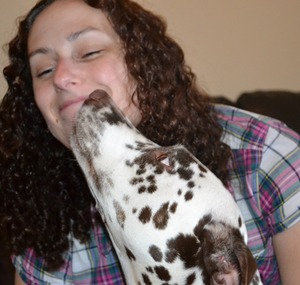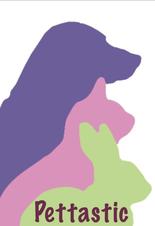Dog Park Etiquette
A dog park can be great for dogs to burn off energy and play off leash with other dogs. Dog parks are also great for the owners to socialise with other dog lovers and their pets.
However there can be danger in a dog park also - not ALL dogs get on and there are a few rouge dogs and owners out there that leave less than to be desired.
Here are some tips put together by Tracy from Pettastic aimed to reduce any incidents at the park;
1.Have a good recall Some dogs don’t like groups or individual dogs rushing up so train your dog to come when called before they get into trouble with other dogs. Keep your dog focused on you once he is with you, then release him to play again. You should also teach your dog that it’s fun to play with you instead of playing with other dogs all the time.
2.Know your dog If you haven’t been to a dog park before ease into it. Go when it’s less busy. Observe how your dog reacts. If your dog is licking his lips, trying to hide behind you and yawning these are some of the signs your dog is afraid and wants to leave and you should listen. A fearful dog can become aggressive. People with dogs that are bullies, or dangerous dogs, should not have their dogs at an off-lead dog park until they have undertaken intensive training with the dog to resolve aggressive tendencies. If this aggression can't be managed by you then stick to on-leash dog walking away from other dogs.
I often observe owners standing and talking and not taking note of their dog’s behavior or when aggressive behaviour is displayed they say something along the lines of "you dog needs to harden up" or "they will work it out". Socialising your dog successfully takes time and commitment and you should think about it in baby steps. Start from afar so the dog gets used to seeing other dogs then move closer. Remember too that you don't know what background some dogs have come from. Rescue dogs can be particularly fearful if they have been mistreated and your aggressive dog 'just playing' could send it right back to square one.
3.Take responsibility of your dog Always keep an eye on your dog. If your dog is stalking or humping the other dogs, call him off and move to another area of the park and do some focus work with them to calm their energy levels down then release. If the behavior persists leave the park to avoid any fights happening.
4.Know the difference between playing and fighting Dogs that are well socialized will display a relaxed posture and take turns chasing each other, and pause frequently to calm themselves down. Some dogs do get over excited and can go into prey drive so I recommend always breaking up play. Get your dog to focus on you then release. Dogs which are out to have a good time will take turns being on bottom when they’re wrestling. Dogs normally are good at telling each other to back off by showing their teeth or growling but some dogs don’t get the message so always keep an eye on both dogs to make sure both are happy to play.
I often hear from some pet owners at the park 'the dogs will sort it out' or the dogs are 'just playing'. Your dog might be playing but if my dog clearly does not want to and is giving your dog plenty of signals to back off then you need to intervene. Call your dog away and either return to lead, practice some focus work or move to another area of the park.
Thanks Tracy for your input!
Tracy runs a business called Pettastic - a dog walking and minding service in Melbourne, of which you can read more about here:

